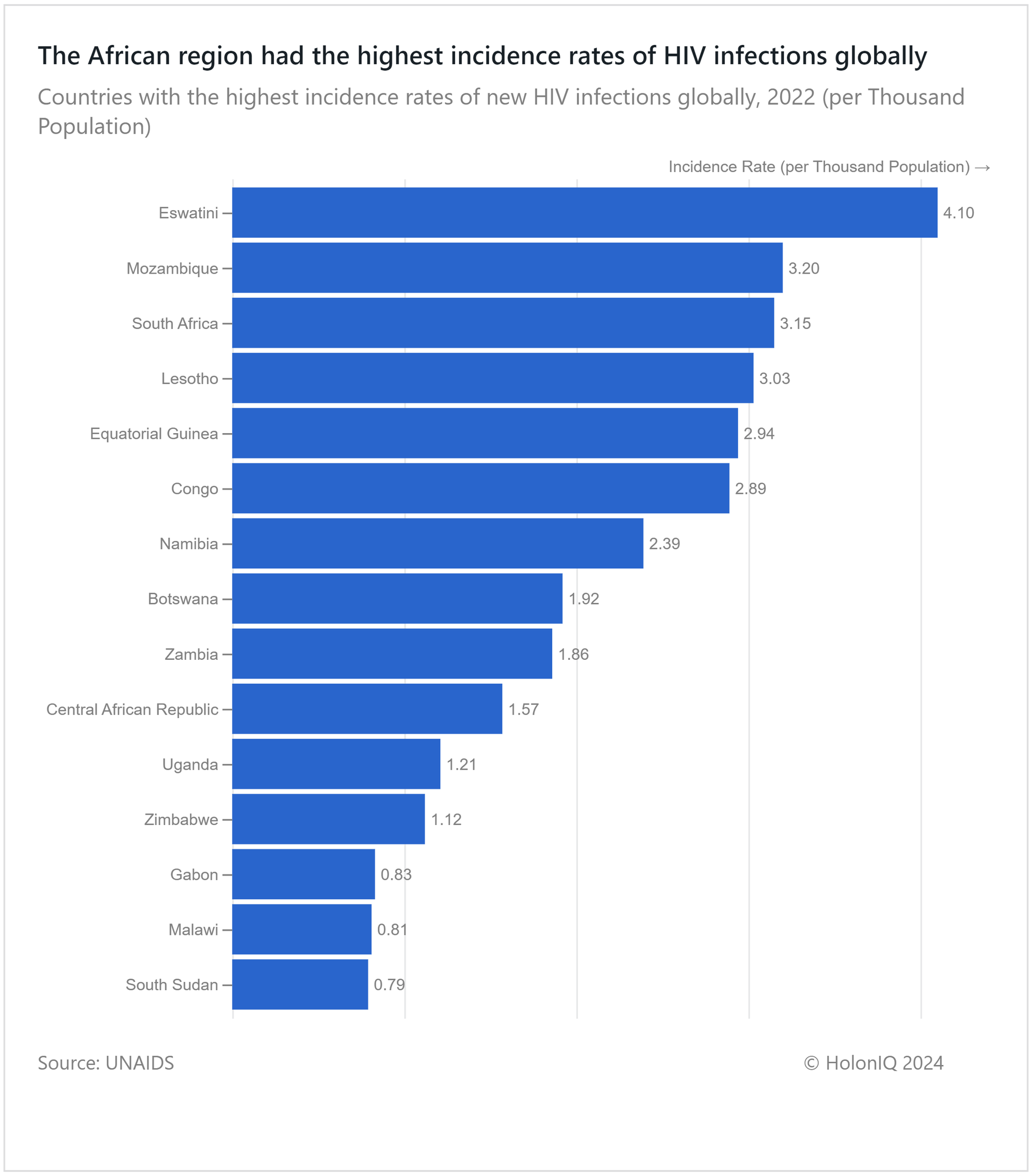💨 China Emissions Fall. Student Preferences. HIV/AIDS Prevalence.
Chart of the Day #79 looks at Student Preferences, Agriculture Emissions and HIV/AIDS
Halo 🌍
Netherland researchers have discovered that the newest CRISPR-Cas gene editing technology can eradicate HIV from infected cells in laboratory experiments. This breakthrough, set to be presented at ESCMID Global 2024 holds promise for a potential cure.
Today's Topics
🌍 Student Preferences. Most international students prefer STEM
💨 Agriculture Emissions. China cuts agri emissions, India’s rise
💊 HIV Aids. Africa most affected by HIV/AIDS
For unlimited access to over one million charts, request a demo.
🌍 Most International Students Prefer STEM

The field of study predominantly chosen by international students was STEM, with a significant proportion of students in countries like the Philippines (74%), Argentina (59%), Germany (58%), and the United States (54%) pursuing degrees in these disciplines. This inclination can be attributed to the demand for STEM skills which are highly valued in the job market across diverse fields. Competencies like problem-solving, analytical thinking, and data manipulation are highly valued by employers across industries, with science majors in science-related roles earning roughly 30% more than those in unrelated fields.
In contrast, Italy, Israel, and Japan have a higher proportion of students studying subjects outside STEM and Business Management, at 48%, 59%, and 45% respectively. This highlights the diverse priorities of international students and the varied educational landscapes within these countries, emphasizing the importance of aligning educational offerings with the evolving demands of global students.
💨 China Cuts Agri Emissions, India’s Rise
Greenhouse gas (GHG) emissions from agriculture vary significantly across countries due to a range of factors. Alongside Brazil, emissions are increasing in India and Pakistan, largely driven by population growth, reliance on traditional farming methods, and inefficiencies in supply chains leading to significant food waste. The continued expansion of agricultural activities exacerbates these emissions, contributing to environmental challenges.
Contrastingly, the European Union (EU) is transitioning towards modern agricultural practices that prioritize sustainability and emit fewer GHGs. By adopting advanced technologies and sustainable farming techniques, the EU aims to mitigate emissions from the agricultural sector. Similarly, China, the largest emitter of GHGs globally at 900Mt as of 2022, is making strides towards sustainable farming practices, leveraging technology and improved skills to reduce emissions.
💊 Africa Most Affected by HIV/AIDS

Sub-Saharan African countries recorded the highest HIV prevalence globally, with Eswatini, Mozambique, and South Africa recording the highest rates. HIV prevailed in this region due to the lack of access to contraceptives, healthcare services, and inadequate sexual health education. Since the 1990s, governments within the region have taken active steps to reduce the HIV infection rates. UNAIDS has urged governments to take action including supplying medication to suppress HIV and conducting awareness campaigns. Treatment guidelines for HIV are continuously relayed to the government from the WHO and DHHS to limit the spread of the virus but due to inadequate infrastructure and financial resources, this remains a persistent battle.
Like getting this newsletter? For unlimited access to over one million charts, request a demo.
Thank you for reading. Have a great week ahead!
Have some feedback or want to sponsor this newsletter? Let us know at hello@holoniq.com
